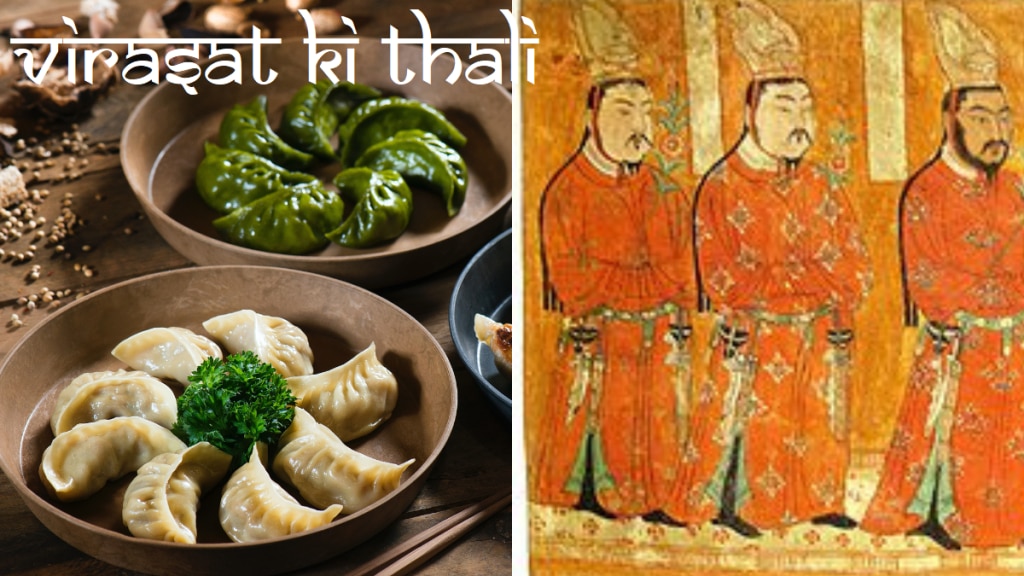Welcome to the fourth edition of Virasat Ki Thali, a month-long series that covers rich tapestry of the food we love. This week we have brought to you, the soft and delectable when steamed, crispy and juicy when fried. These tiny dollops of savoury bliss are found all over the country and abroad. Yes you guessed it right! It’s none other than our favorite momo.
Ah, the momo! A delightful treat that has traversed lands, time, and cultures to win hearts across India and beyond. Join us as we embark on a delectable journey to unravel the mystery behind the history of momos. From its disputed origins to its introduction to India, we delve into the fascinating tale of this much-loved dumpling.
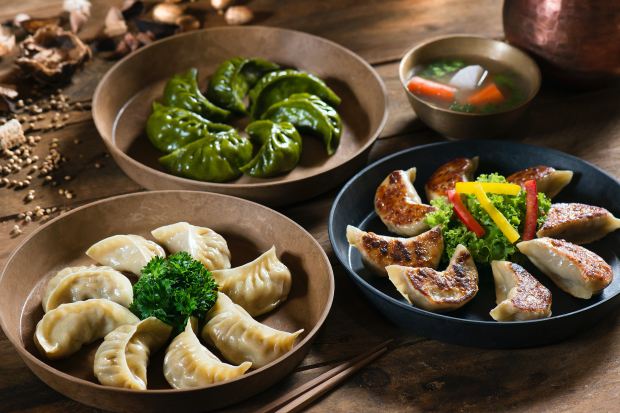
From the bustling streets of Kolkata’s Chinatown to the serene hills of Darjeeling, from the vibrant markets of Delhi’s Majnu ka Tila to the tranquil monasteries of Sikkim, the aroma of momos is an alluring invitation that beckons food lovers from all walks of life. This seemingly humble and unpretentious dish has found its way into the hearts and tummies of millions of Indians, making it an integral part of our diverse culinary landscape.
Momo has become so Indian now that we have over 100 to 1500 varieties of momos including festivals and restaurants dedicated entirely to momos themselves! In midst of time, Momos have come a long way and became our comfort food.
Chapter 1: The beginning
Who made the momos? The question is as diverse as the fillings of these savory bundles. According to tales, the Turks and the Chinese both claim credit for this culinary creation. The nomadic Turkic people and later the Mongols are believed to have carried dumplings, similar to momos, on their vast travels from Central Asia to Europe and even Korea.
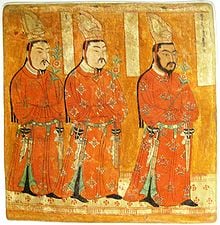
Ancient Chinese records reveal that dumplings resembling momos existed over 1700 years ago. Fossilized half-moon-shaped dumplings found in Turfan, China, provide historical evidence of their early existence. And wait, the Romans are not far behind – they had a dumpling recipe with roasted peasant as an ingredient!
Chapter 2: Entry to India
In the mid-20th century, momentous events unfolded in Tibet, as China’s capture and subsequent conflict led to a significant upheaval. Tibetans, seeking freedom from oppression, embarked on a courageous journey to seek refuge in India. Led by their revered spiritual leader, the Dalai Lama, they settled in the picturesque town of Dharamshala in Himachal Pradesh.
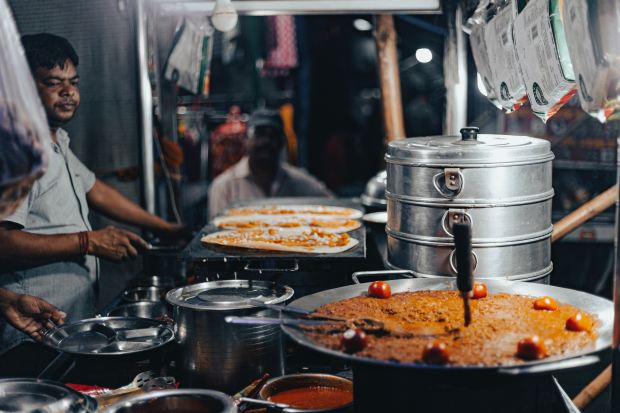
With the influx of Tibetan refugees in the 1960s, they brought along with them a precious treasure from their homeland – momos. Thus, these delectable delicacies found a new home in the heart of India. The initial waves of Tibetans in places like Dharamshala, McLeodganj, and various other regions paved the way for the spread of momos across the country.
However, the tale takes a significant turn when it comes to India. It is widely believed that momos entered India in the 1960s when a large wave of Tibetan refugees sought refuge in various parts of the country after the Chinese annexation of Tibet. With them, they brought their culinary traditions, including the cherished momo. The Tibetan diaspora settled in places like Dharamshala, Sikkim, Ladakh, Darjeeling, Kolkata, and Delhi, introducing Indians to the delightful world of momos.
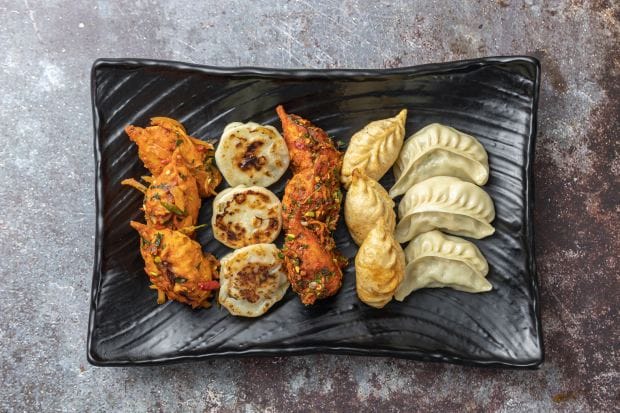
Another theory suggests that Newar merchants from Kathmandu, who frequently traveled along the ancient Silk Route, also played a role in introducing momos to India. They might have brought the cherished recipe from Tibet during their travels, further enhancing the popularity of this delicacy.
Chapter 3: Momos take root in India
The momo quickly found a special place in the hearts of Indians. From small street stalls to bustling markets, momos became ubiquitous. But what made them so popular? Well, partly it’s the sauces – Indians love spice, and momo chutneys deliver that spicy kick. Moreover, momos are quick, affordable, and perfect for instant gratification, making them an ideal street food option any time of the day.
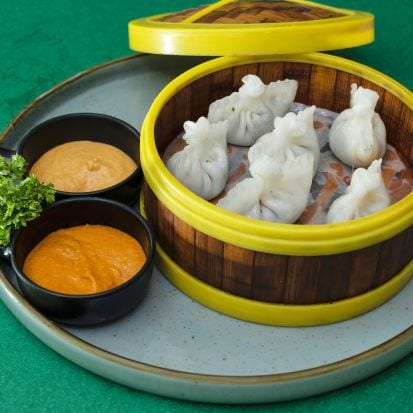
As the momos settled into their new home, they quickly adapted to the Indian palate, leading to a variety of delightful innovations. While Tibetans initially enjoyed momos made with yak meat and other non-vegetarian fillings due to limited agriculture, they tweaked the recipes in India to cater to the diverse preferences of the Indian population. Veg momos, paneer momos, and now even dessert momos have become an integral part of the menu.
Chapter 4: Evolution
Momos have evolved into a culinary delight with over 100 to 1500 varieties available today. Each region in India has put its unique twist on this beloved dish. In the Northeast, you can savor meaty fillings in creamy, light shells with spicy chutney. In Sikkim, Bhutias, Lepchas, and Nepalis relish momos as comfort food. Darjeeling and Kolkata’s Chinatown boast vibrant momo hubs with diverse offerings. Uttarakhand is brimming with momo stalls, and Delhi’s Majnu ka Tila has a whole Tibetan market dedicated to this delight.
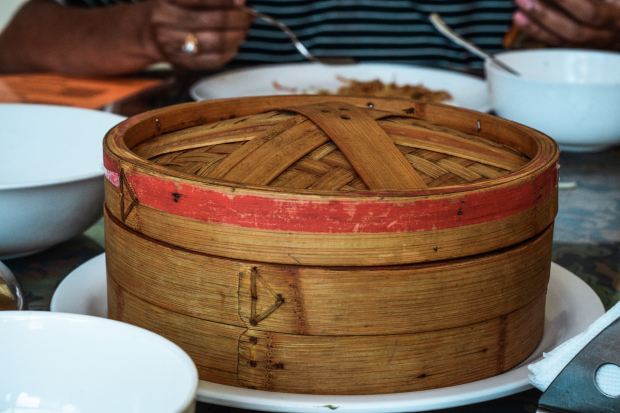
Beyond the traditional steamed momos, there are various exciting options to explore. Pan-fried momos, deep-fried momos, and momo soups offer delightful variations in taste and texture. Innovations such as chili paneer momos, tandoori momos, prawn momos, and chocolate momos cater to a wide range of taste preferences.
Best places that serves best Momo around India
Momos have now become an integral part of India’s diverse culinary landscape, with regional variations adding to their charm.
Momos from the Northeast: In Shillong, expect meaty fillings in creamy, light shells with spicy chutney. In Arunachal Pradesh and Sikkim, momos are a regular part of the diet, and their version closely resembles traditional Tibetan momos.
Momos in Bengal and Kolkata: Kolkata’s vibrant Chinatown is famous for its momo street, showcasing the cultural melting pot of flavors.

Momos in Delhi: The Tibetan market in Majnu Ka Tila is a haven for momo enthusiasts. Dilli haat is another one of our personal favorite place that serves momo with soup. Oh! what a taste.
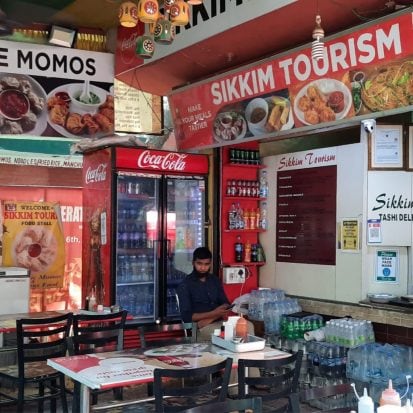
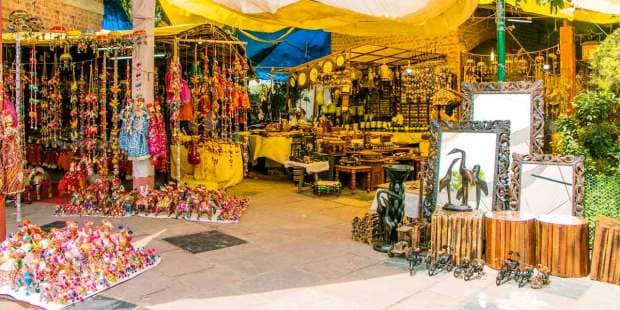
The artistry behind making the our momo
With practiced hands, the skilled chef kneads a supple dough, like the gentle embrace of a warm breeze. Carefully, they pinches a small portion, rolling it into a delicate circle that mirrors the rising sun at dawn. Nestled within this celestial wrapper is an exquisite blend of flavors, a symphony of tastes from distant lands. Fragrant spices, succulent meats, or vibrant vegetables are carefully placed, like stars in the night sky, creating a constellation of taste. As the dough lovingly envelops its heavenly filling, it becomes a half-moon crescent, a celestial dance of gastronomic delight. The steamer lets out a soft sigh as the momos settle within, a dance of steam that swirls like ethereal mist. And in this magical cocoon, the momos transform, their essence mingling and infusing, until they emerge soft and tender, like clouds that melt on the tongue. With each bite, a burst of flavor unfolds, a celestial experience that leaves one yearning for more. For the momo is not just a dumpling; it is a celestial gift, a masterpiece of culinary artistry that transcends time and borders, a taste of heaven on Earth.
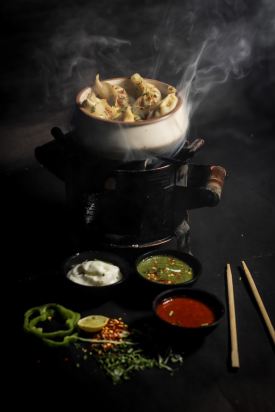
The varieties you might or might not have eaten
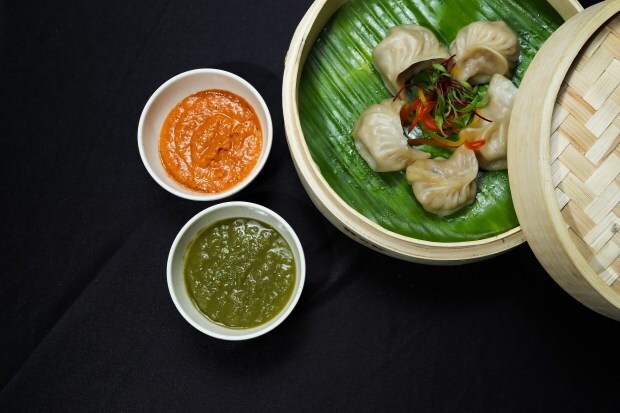
- C-momo: These momos can be either steamed or fried and are served in chili sauce, providing a perfect blend of flavors and textures. The choice between steaming or frying offers different taste experiences.
- Dhapu Momo or Tibetan Momo: These momos are characterized by their larger and flatter shape compared to other versions. They often come with a delicious filling and are widely enjoyed in Tibet and surrounding regions.
- Gong’a Momo: This variant features a wheat and egg fried dough dumpling filled with a savory meat paste. The crispy outer layer complements the rich meaty filling inside.
- Green Momo: A healthier option for vegetarians, these momos are steamed and stuffed with a delightful mix of vegetables, cabbage, and green beans, providing a burst of freshness and taste.
- Hoentay: Hailing from Bhutan, Hoentay is a unique momo made from buckwheat dough wrapper mixed with spinach and cheese, giving it a distinctive and rich flavor.
- Kothey Momo: This mouthwatering pan-fried version of momo is first filled with a delicious combination of meat, vegetables, and spices. After steaming, they are pan-fried to perfection and served with a delightful dipping sauce.
- Open Momo: A creative Nepalese addition to the momo family, Open Momo has a distinct shape with open holes on the top. These holes can be used to add various sauces and spices, making them a customizable treat.
- Sadheko Momo: A unique twist on the traditional momo, Sadheko Momo is essentially a momo salad. It features momos mixed with onions, tomatoes, herbs, and spices, offering a refreshing and tangy flavor.
- Shogo Momo: This Tibetan variant takes mashed potato and dough, shaping them into balls, and filling them with minced meat. They are then served with bread crumbs for a delightful texture contrast.
- Tingmo: Unlike other momos, Tingmo is not filled with any ingredients. It is a type of steamed bread made from flour, yeast, and water, serving as a perfect accompaniment to savory dishes like stews and curries.
- Xab Momo: This Tibetan dumpling is filled with beef or mutton, offering a rich and meaty experience for those who prefer heartier flavors.
These varieties of momos showcase the culinary diversity and creativity present in South Asian cuisine. Whether you prefer vegetarian options or indulge in meat-filled delights, momos have something for everyone to enjoy.

